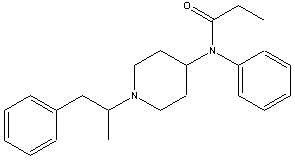The Therapy Sessions
Monday, June 21, 2004
Serendipity
In 1982 in southern California, a man was admitted to a hospital emergency room in a nearly comatose state. His bodily functions appeared normal, and he was conscious, but he was unable to talk. In fact, he was unable to move any part of his body except for his eyes.
The man was brought to Dr. J. William Langston, who was baffled by the man's problems. The patient seemed healthy, young and normal.
Within a few days, several patients with identical symptons were admitted to area hospitals. Dr. Langston was able to communicate with the patients by asking yes/no questions and having them blink their eyes to respond.
He determined that all the victims were heroin addicts. Langston immediately notified the police, suspecting a bad batch of heroin was on the street. Police sent out warnings to the drug community, and their labs did full analyses on all the synthetic heroin the police seized.
They discovered an impurity present in one batch of "China White," a synthetic heroin known as alpha-methyl fentanyl:

The impurity was MPTP:

It is unclear how the street chemists ended up with this MPTP impurity. I can see a clear synthesis from available starting materials in four steps (the synthesis of alpha-methyl fentanyl looks pretty easy). But there is a huge difference between doing chemistry in an industrial laboratory and doing chemistry on the steet.
For one, street chemists have to take materials they can easily get (like those who make amphetamines out of pseudophedrine-containing cold medicines). This often means developing syntheses that are not immediately apparent to the authorities. (I've personally received phone calls from from DEA agents who were curious about materials that I've bought in the course of my research (a 500 ml bottle of piperidine raises eyebrows? Jeez!)).
But it is just as likely that our street chemists might not have even been trying to make alpha-methyl fentanyl itself, but a designer drug derivative. Such experimentation was common in the '80's: it was a method of staying ahead of the authorities because the government couldn't declare unknown compounds illegal (that changed in 1986).
Such experimentation is similar to what drug companies do all the time, except that in this case, the guinea pigs were human. In this case, the effects were disastrous for the victims, but the knowledge gained was a boon for the scientific research of a debilitating disease.
Langston noted that his patients now had a permanent condition that resembled advanced Parkinson's disease. With nothing to lose, Langston tried prescribing a treatment for Parkinson's, a drug known as L-dopa. The patients responded immediately: some of their motor functions were restored. They were not "cured," but the response to the L-dopa made it clear that MPTP had inflicted brain damage very simlar to the damage seen in Parkinson's.
In Europe to discuss his findings at a conference on Parkinson's disease, Langston was on a conference bus that broke down. He began discussing his research with Anders Bjorkland and several other European researchers. In the course of the discussion, it became clear that they each had something that the other needed.
The European researchers were excited that their work was having beneficial effects against Parkinson's, but they could not be sure: the disease was steadily progressing and causing further damage even as the therapies were possibly working. They could not easily tell what effects their compounds were having on Parkinson's because of the disease's progression.
Langston, however, had Parkinson's symptoms without the progressing disease. Langston had discovered the first test model for Parkinson's, and it is still in use today.
He is currently the science director of the Parkinson's Institute in Sunnyvale, California, where he is trying to link environmental chemicals with Parkinson's. The body converts the China White contaminant MPTP to MPP+, a toxin that is strikingly similar to an herbicide called paraquot. The leading chemicals most suspected of playing a role in causing the disease include pesticides, herbicides and metals such as iron, manganese and copper. One suspected pesticide is Rotenon, the chemical of choice for organic farmers because it is derived from naturally occurring compounds in the roots of legumes.
Some scientists have not accepted the hypothesis that environmental chemicals play a major role in causing Parkinson's and instead still think there might be a genetic component to the disease. But Langston is convinced there is an environmental component and cites a study conducted in twins that supports his view.


